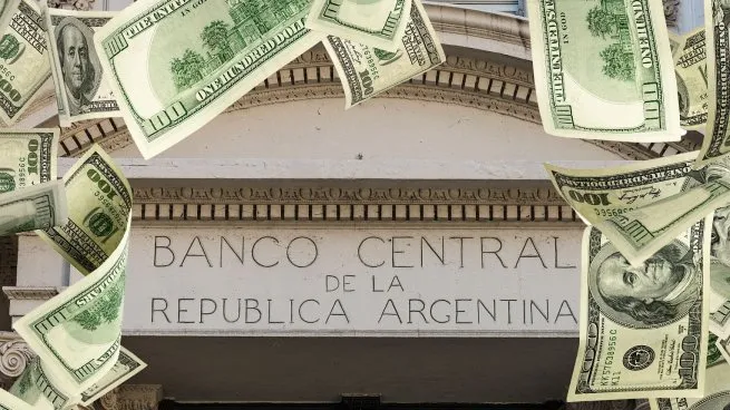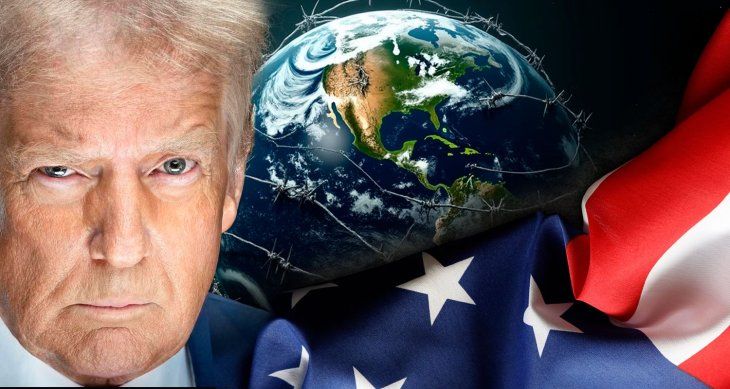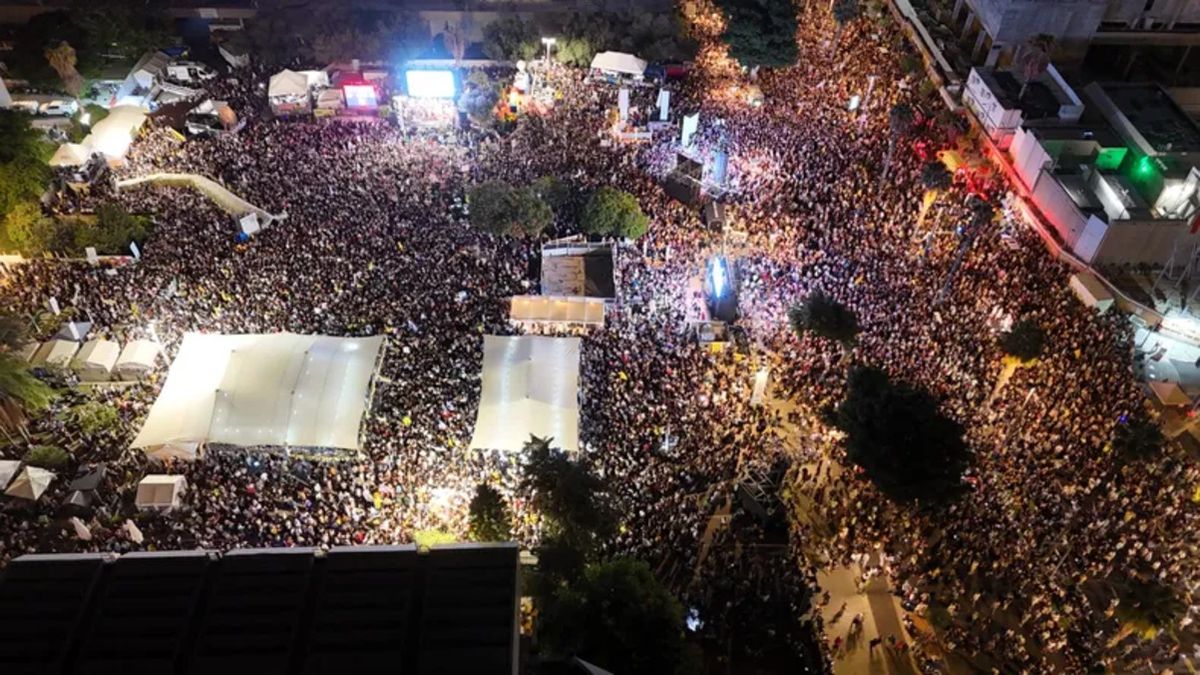Conversations and meetings dominated by the apathy about electoral future did not stop reflecting priorities for investors, above all, foreigners, who, after all, recognize that they can look the other way, in terms of the pending challenges, but that In the short term they see in the electoral result (October) the “key” of what will come, and, therefore, of his future action.
In the mouth of a insightful manager-consultant, The rally that Argentine assets lived was so far work and grace of the “Hedge Funds”, Still the “Really Money”, which already burned with Argentine milk several times, sees a holando and cries, those funds and investors, they still did not enter. In spite of the fed up with politiquería, the issue sneaked into all types of meeting between the people in the market. In the words of the majority, certain things can be forgiven to the libertarian government about the speed of its economic plan, turn a blind eye with the real exchange rate, the Net International Reserves (RIN) of the Central Bank (BCRA), etc., have a little more patience, but the truth is that the How to go to the ruling party in October will be decisive for investment decision making.
In that line, in a red zone redoubt an analyst, always well informed, concluded that if citizen participation in CABA, today the battle of the rights par excellence, will be low as speculated, then, it will be the hard nuclei who define the Buenos Aires election. That is, the one who encourages his followers and fans more, will have more chances of leaving unharmed, even winner of the Buenos Aires contest. The combo Leo XIV, Colapinto and Rain seems to be the most gravitant factor in this Buenos Aires election, of which people know little and nothing, that demolish the conclusions of the focus group, polls and surveys.
In another economic bunker, the guest to tell the situation and political perspectives, an old acquaintance of the political and economic world, anticipated that After the Buenos Aires election, the government would accelerate the reform agenda. Moreover, he slipped that Labor would be spearhead, via Congress and via DNU. Thus he anticipated a group of entrepreneurs and financiers that the reform process (several included in the EFF of the International Monetary Fund -FMI-) would take another vertigo. We will see. For now, the mesadinerists hope to see the degree of influence of CABA’s results on national elections. What these meetings show is that a certain climate of distrust reigns in terms that the fight between freedom progresses (lla) and the pro of Mauricio Macri ends up decaying in the triumph of the rest, since it extends the chances of it. Why do so much relevance to this? As a well -known economist explained, today with the lowest profile, clients from abroad, who already saw and suffered the experience of 2017/18 prefer to wait They fade. What was said is that, in addition, that the reforms enter in vertigo, It is believed that a very negotiation stage comes, so the lack of expertise and political doll of the government, apparently so far, generates more future noise.
At the global level, according to the main investment banks of Wall Street, the probability of a recession in the US remains latent. It has decreased, from the commercial truce with China, but the damage already made conspires with the chances that the economy retreated. A “Conference Call” made it clear: the port activity in the US is a faithful reflection of how things are and what is coming, and in that sense, large companies recognized that they are still operating a high degree of uncertainty on the tariff theme. Today they should be making orders for Christmas and the truth is that they do not know whether to do it with these tariffs or wait. So the effects of Trump shock have not yet dissipated and consensus does not fully rule out a recession.
Wall Street
At a global level, investors do not seem to have respected the old adage of selling in May and fleeing but rather the opposite.
Global investors: “Sell in May and Go Away”?
However, unlike the historical dogma of “Sell in May and Go Away”, globally, investors do not seem to have respected the old adage of selling in May and fleeing but rather the oppositeespecially from the morning of May 7 when, after the tariff agreement with the United Kingdom and the announcement of a meeting between the US and China the following weekend, the market recovered optimism, if not the euphoria, of the old days. A European strategist lies in Chicago years ago warned colleagues who, although the fall of volatility has certainly encouraged many funds and retailers to buy, and the numbers say that the retail component has been very strong in recent days, observes that large options positions indicate that there is a fairly strong wall, for example, in area 5.970-6.050 of the future of the future of the S&P. Of course, I acknowledged that as always in the options it is a wall that can be moved and sometimes even in a matter of minutes.
A colleague reminded him that the good old days in which wall options sold that would provide a relative safety network in case of fall have not returned. But Despite the bad reputation of May, the strategist contributed this data: the second fortnight of the month has registered a positive trend 15 times of 25 in the last 25 years. The maximum decrease, in the 10 cases in which it occurred, was 5.72%, and dates back to a specific year like 2000. In the last 5 years the trend has always been positive and in the last 10 years seven out of 10. In the last 25 years, in the first fortnight, 13 years are positive, such as 2025. Taking these 13 years as a reference, 8 times of 13 the second fortnight was positive (15 of 25 of 25 is 60% of the time. 13 is 61%, the numbers are always the same).
bcra-dolar-reservas.png

Follow the concern about how the BCRA will buy reservations, if it manages to do it.
Reservations: The official strategy as Achilles heel
In a classic monthly meeting between one of the main consultants of the local square and its clients, Many multinationals made it clear after validating the good data of the April CPI that the priority for the government was none other than to lower inflation. Then you will see how the real exchange rate to the elections arriveswhich is a risk especially if the electoral climate is thin and the opposition chances grow. Follow the concern about how the BCRA will buy reservations, if it manages to do it. The goal with the IMF does not matter, which will surely be breached, but at least it reaches a more decoor level of negative rhine. For many this is still the Achilles heel of the program. That is why they argue that if the government had bought reservations the country risk had fallen much more, and hence the issue continues to inject noise into investors, who only aspire to collect their coupons. The official strategy, explained the host, would seem to go by way of repo and some type of linkeado bonus, a scheme of purchase of not so sustainable reserves, even more with a deficit current account.
Another financial bunker was the scene of a debate about the risks of wanting to take the dollar to the lower band of $ 1,000, not only because of the impact on the level of activity, but for the expectations that would generate a potential electoral noise near October. Some state that without the harvest effect and the legislative just around the corner what would happen if Cristina reappears with high chances, remembering what happened in 2017. From the opposite sidewalk they question why people will want to buy dollars, if the government will win. Even when together for the change it devastated the polls and Cristina was candidate the treasure jumped to the clouds. The official argument is that there are not as many loose weights as in those years. The most distrustful they rebound that people can make those weights, either lowering the “rollover” or canceling fixed deadlines, for example. An open debate. For now, the official strategy of not buying reservations until the lower band is touched continues to raise doubts. The host recalled that the strategy can be based on ideas, but the execution lies on the facts and how Churchill warned: “However beautiful the strategy is, from time to time you have to look at the results.” The almost null “Pass-Through” was celebrated on the April CPI but they kept highlighting that the “Core” inflation or core stabilized above 3%, reflecting a certain “Pass-Through”.
Trump tariffs April 2025

So far two agreements were reached, more or less, in about 36 days, of the 90 agreements that the Trump team intends to close in 90 days.
COMMERCIAL AGREEMENTS: 88 Missing
Just arrived a group of managers and research brought the following data from Washington: Trump’s officials promote their first commercial “agreements”, with bombs and dishes, with the United Kingdom and China. However, In the case of the United Kingdom They say that the agreement is an agreement only in the broadest sense of the term since the document states that it is not a legally binding agreement, and that this marks the beginning of the negotiations to formalize its content. In summary, It does not represent an improvement for anyone compared to tariff levels prior to government possession in January. American imports from the United Kingdom will be subject to an average tariff of approximately 10%, compared to 2% prior to January. In any case, it indicates that the US minimum 10% tariff has come to stay, both for the United Kingdom and other US commercial partners.
While, in the Chinese case, the situation is more similar to a temporary truce or, as the Trump administration, a pause. The two largest economies in the world agreed a 90 -day break in exorbitantly high tariffs that imposed each other a little over a month ago, until August 10 unless something else happens before, which is likely. So They are two agreements, more or less, in about 36 days, of the 90 agreements that the Trump team intends to close in 90 days. Only 88 more. The next stop of this grupete of managers and research will be Mexico, almost at the end of the month when the annual global Etfgi summit for the region is celebrated. In this regard, there was a new fact of this market: the ETF industry in the US reached a record of US $ 361,000 million net tickets in the first four -month period of the year exceeding the maximum of 2021. Only in April almost $ S63,000 million entered the 36 ° consecutive month of net tickets. The US ETF already handles almost US $ 11 billion.
Source: Ambito
I am a 24-year-old writer and journalist who has been working in the news industry for the past two years. I write primarily about market news, so if you’re looking for insights into what’s going on in the stock market or economic indicators, you’ve come to the right place. I also dabble in writing articles on lifestyle trends and pop culture news.




